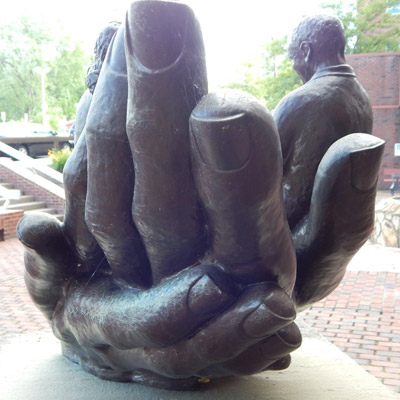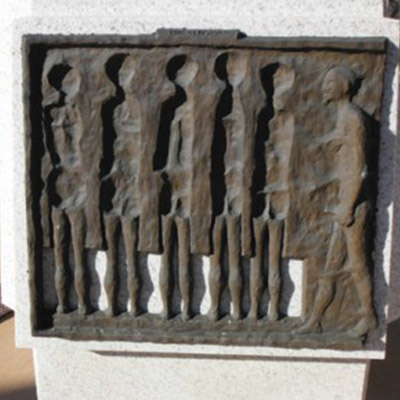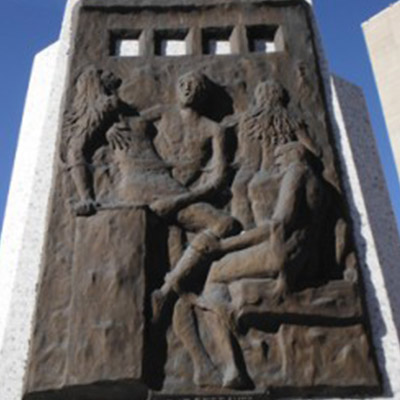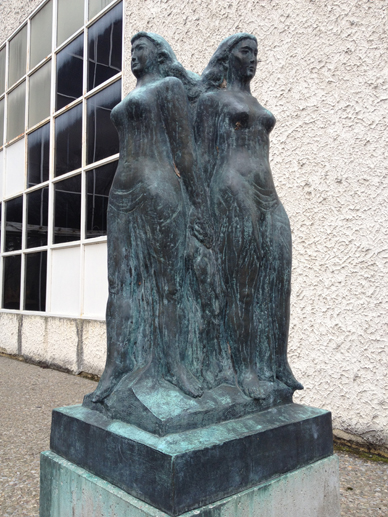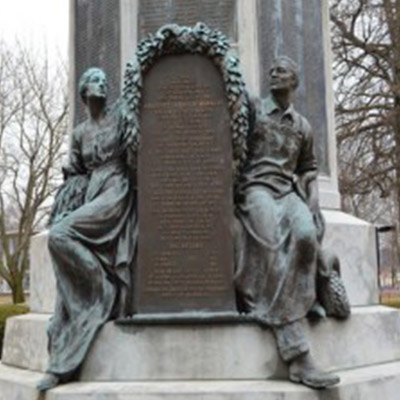Reviewed by George Basler
Five years after scoring a major success on Broadway with her play A Raisin in the Sun, Lorraine Hansberry threw critics and audience members a surprise left hook with a play radically different in tone and subject matter.
While Raisin deals with the struggles of a multigenerational Black family attempting to rise into the American middle class, The Sign in Sidney Brustein’s Window focuses on the troubled marriage of a Jewish bohemian and his wife who, along with a parade of supporting characters, navigate the social and political currents in Greenwich Village in the early 1960s.
Hansberry’s new direction confounded some critics and audience members when the play first opened in 1964. It received mixed reviews. In recent years, though, a reevaluation is taking place.
A well-crafted production, now in the middle of a three-weekend run at the Ti-Ahwaga Community Playhouse in Owego, shows the reevaluation is warranted. Hansberry’s play embraces human complexity and human fragility in a way that remains powerful and prescient 60 years after it was first produced.
Hansberry’s play is complex and at times unwieldy. But the Ti-Ahwaga production is never boring and has moments of riveting emotional force. Credit goes to the eight-person cast for turning their characters into people you care about despite their flaws and neuroses.
And flawed they are. Sidney Brustein (Joe Hoffmann) is a floundering artist, bouncing from one failed endeavor to another. He deeply loves his wife, Iris (Nina Varano), but can’t stop demeaning her at times. His idealism has curdled into cynicism.
Iris has her own issues. She is struggling to be recognized for her independence as an actress and puts on a brave, sometimes abrasive, exterior. Her self-confidence, however, is paper thin.
Other characters are Mavis, Iris’ bigoted sister; David, a sarcastic gay playwright; Wally O’Hara, a corrupt politician passing as a liberal reformer; Max, a manic abstract artist; Alton, a Black activist who has fallen in love with Gloria, Iris’ other sister, and Gloria, a prostitute who Iris has passed off as an international model.
The fraught relationship between Sidney and Iris is at the center of Act I. But the act is also filled with freewheeling humor as Hansberry takes shots at artistic pretension, existentialism (Hansberry wasn’t a fan, believing it too distant from the world’s economic and political realities) and bohemian smugness. A scene featuring Deirdre Nolis as the manic Max is especially funny.
Hansberry was a committed political activist, so it’s not surprising that Sidney touches on the issues of her day from racism to political corruption. But the heart of the play isn’t politics — it’s human drama. The Ti-Ahwaga cast, under the direction of Ryan Canavan and Nathan Butler, features strong performances throughout as the actors tackle the troubled, imperfect characters.
One highlight is Jason E. Walsh’s portrayal of the Black activist, Alton. His pain and anger on discovering that Gloria is a prostitute are frighteningly intense. Walsh reveals how the scarring effect of racism has warped the character’s own psyche to the point that he can’t accept love when it’s there for the taking.
Another highlight is Anna Tagliaferro’s performance as Mavis. The character, at first, seems to be nothing more than a bigoted busy body. But a monologue in Act II reveals her desperation as Mavis deals with an unsatisfactory marriage and the loneliness it produces. The character has no illusions about herself, and that hurts.
Then there is Claire Gratto’s performance as Gloria, the prostitute. Her descent from joy and optimism to despair and self-destruction after Alton rejects her is heartbreaking.
Also providing solid performances are Stan Zawatsky as the corrupt politician who rationalizes his behavior, and Shane Smith as the playwright who flaunts an aesthetic and moral high ground but commits a vile act near the end of the play.
Hansberry’s play, however, always keeps Sidney and Iris at its core. Hoffmann and Varano are compelling in the roles.
The characters love each other, and their sexual attraction is palatable. But hurts and disappointments have turned their marriage into a battleground.
Hoffmann captures Sidney’s weary dissolution and anger that lead him to lash out at Iris. But the character has a sensitive, wistful side as well, and Hoffman effectively plays those qualities.
Varano also performs anger well while also showing Iris’ vulnerability stemming from her bad memories of childhood and the realization that she is not a very good actress.
Hansberry’s play is a frustrating one in some ways. She throws a lot of plot points against the wall, maybe too many. Some scenes are explosive; others are rambling. The ending seems pat. But Sidney’s final confrontation with the corrupt politician has real sparks.
The play ends with Sidney and Iris embracing as they deal with a personal tragedy. But have they reached a reproachment, or just a temporary truce? It’s a credit to the Ti-Ahwaga production that you care about the answer.
IF YOU GO: Ti-Ahwaga Community Players will continue to present Lorraine Hansberry’s The Sign in Sidney Brustein’s Window weekends through Oct. 20 at the Ti-Ahwaga Community Playhouse, 42 Delphine St., Owego. Friday and Saturday performances are at 7:30 p.m.; Sunday performances are at 2 p.m. Tickets at $25 are available at www.tiahwaga.com or by calling 607-687-2130.









